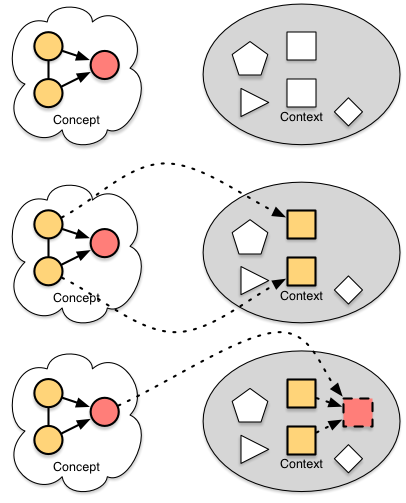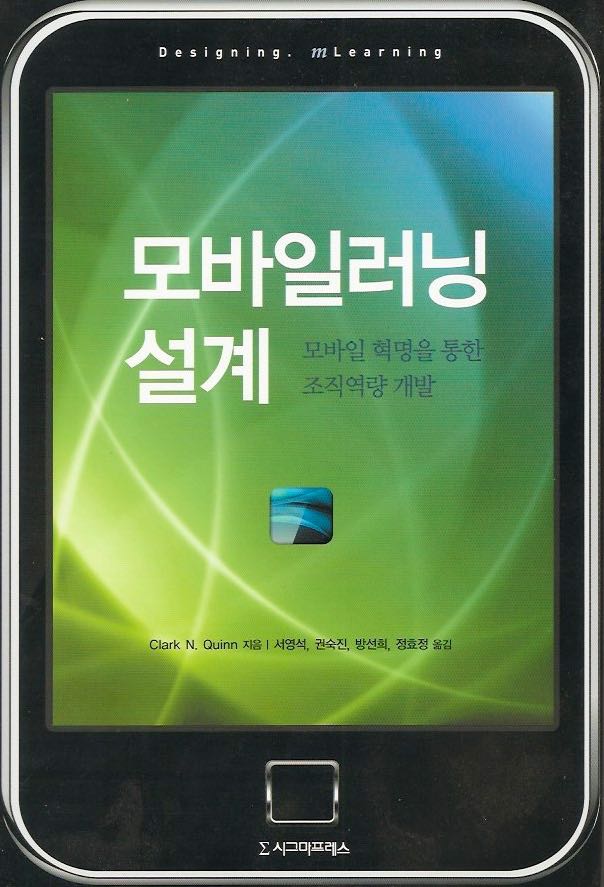It actually happened a while ago, but I was pleased to learn that Designing mLearning has been translated into Korean. That’s kind of a nice thing to have happen! A slightly different visual treatment, presumably appropriate to the market. Who knows, maybe I’ll get a chance to visit instead of just transferring through the airport. Anyways, just had to share ;).
Archives for September 2015
Modelling
So, I found an interesting inconsistency. I had to submit my deck for my DevLearn workshop on Cognitive Science for Learning Design last week, but oddly, for every thing I was recommending I had a diagram, except for the notion of using models. This is ironic, since diagrams can be used to convey models. It bugged me, so I pondered.
And then I remembered that I gave a presentation years ago specifically on diagrams. Moreover, in that presentation I had a diagram for a process for creating a diagram (Department of Redundancy Department). So, I finally got around to trying to apply my own process to my lack of a model. And voilà :
 The process is to identify the elements, and the relationships, and then additional dimensions. Then you represent each, place them (elements first, relationships second, dimensions last), and tune.
The process is to identify the elements, and the relationships, and then additional dimensions. Then you represent each, place them (elements first, relationships second, dimensions last), and tune.
Here the notion is that you have a mental model of a concept, capturing elements and causal relationships. When you see a situation, you select a model where you can map the elements in the model to elements in the context. Then you can use the model to predict what will happen or explain what happened. Which gives you a basis for making decisions, and adapting decisions to different contexts in principled ways.
Models are a powerful concept I’ve harped on before, but now I’ve an associated diagram. And I like diagrams. I find mapping the conceptual dimensions to spatial dimensions both helps me get concrete about the models and then gives a framework to share with others. Does this make sense to you, both the concept behind it, and the diagram to represent it?
I’ll be presenting this in the workshop, amongst many other implications from how our brains work (and learn) to the design of learning experiences. Would love to see you there.
Community of improvement?
In a conversation I had recently, specifically about a community focused on research, I used the term ‘community of improvement’, and was asked how that was different than a community of practice. It caused me to think through what the differences might be. (BTW, the idea was sparked by conversations with Lucian Tarnowski from BraveNew.)
First, let me say that a community of practice could be, and should be, a community of improvement. One of the principles of practice is reflection and improvement. But that’s not necessarily the case. A community of practice could just be a place where people answer each other’s questions, collaborate on tasks, and help one another with issues not specifically aligned with the community. But there should be more.
What I suggested in the conversation was that a community should also be about documenting practice, applying that practice through action or design research, and reflecting on the outcomes and the implications for practice. The community should be looking to other fields for inspiration, and attempting experiments. It’s the community equivalent of Schön’s reflective practitioner. And it’s more than just cooperation or collaboration, but actively engaging and working to improve.
Basically, this requires collaboration tools, not just communication tools. It requires: places to share thoughts; ways to find partners on the documentation, experimentation, and reflection; and support to track and share the resulting changes on community practices.
Yes, obviously a real community of practice should be doing this, but too often I see community tools without the collaboration tools. So I think it’s worth being explicit about what we would hope will accompany the outcomes. So, where do we do this, and how?
#itashare
